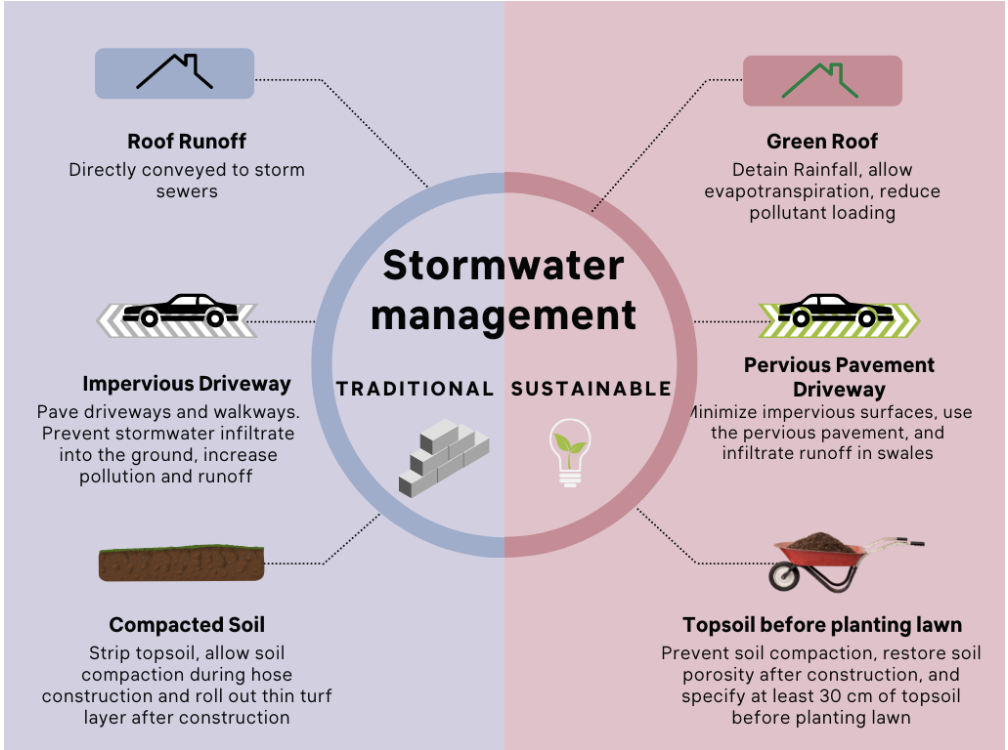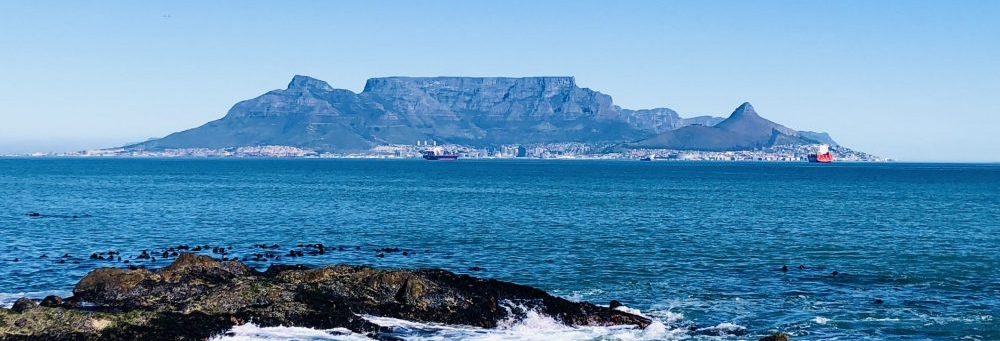What is Urban Stormwater Runoff?
Rapid urbanization has resulted in a surge in the area under hard, impervious surfaces, which have largely replaced original natural landscape features in urban and peri-urban centres. The increased hardscapes, such as roofs, roads, and parking lots have reduced the rainfall infiltration, increased the peak volume, and increased the concentration of pollutants carried in the runoff.
The interactive feature below allows you to understand more about the nutrient pathway of the urban stormwater runoff.

Conventional stormwater system
Conventional pipe-based stormwater systems alone are now thought to be insufficient, as they primarily focus on the rapid removal of all stormwater runoff via channels and pipes into the nearest receiving water body, ignoring the important processes that the soils and vegetation of a watershed provide for maintaining sufficient water storage, stream flows, groundwater recharge, and water quality (Armitage et al., 2013).
Green Infrastructure/Low Impact Development
Green infrastructure elements can be integrated into a community at different scales, which are neighborhood scale, property scale, and watershed scale. At property and neighborhood scales, examples include rain gardens, bioswales, permeable pavement, and green roofs. At watershed scales, examples include constructed wetland and riparian buffer zone.






Reference
GSA. US. (2011). The Benefits and Challenges of Green Roofs on Public and Commercial Buildings. A Report of the United States General Service Administration; 2011. [A Report of the United States General Service Administration].
Armitage, N., Vice, M., Fisher-Jeffes, L., Winter, K., Spiegel, A., & Dunstan, J. (2013). Alternative Technology for Stormwater Management: South African Guidelines for Sustainable Drainage Systems – Report and South African Case Studies (Report TT 1826/1/13). Water Research Commission of South Africa.
Fletcher, T. D., Shuster, W., Hunt, W. F., Ashley, R., Butler, D., Arthur, S., Trowsdale, S., Barraud, S., Semadeni-Davies, A., Bertrand-Krajewski, J.-L., Mikkelsen, P. S., Rivard, G., Uhl, M., Dagenais, D., & Viklander, M. (2015). SUDS, LID, BMPs, WSUD and more – The evolution and application of terminology surrounding urban drainage. Urban Water Journal, 12(7), 525–542. https://doi.org/10.1080/1573062X.2014.916314
Poleto, C., & Tassi, R. (2012). Sustainable urban drainage systems. IntechOpen, 55–72.
US EPA. (n.d.-a). Urban Runoff: Low Impact Development. Retrieved May 31, 2022, from https://www.epa.gov/nps/urban-runoff-low-impact-development
